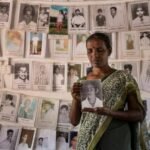How did the Tamil diaspora humanize the statistics related to human rights violations?
The Tamil diaspora humanised the statistics related to human rights violations in several impactful ways, ensuring that the data resonated on a personal and emotional level. Here are some key methods they employed:
1. **Personal Testimonies**: The diaspora collected and shared personal stories from survivors and witnesses of human rights abuses. By providing firsthand accounts, they transformed abstract statistics into relatable narratives that highlighted individual experiences and suffering.
2. **Case Studies**: They presented specific case studies detailing incidents of violence or abuse, including the names, ages, and backgrounds of victims. This approach individualised the statistics, making them more tangible and compelling.
3. **Visual Storytelling**: The diaspora used photography and videography to document the realities faced by affected individuals and communities. Visual content, such as documentaries and photo essays, brought the statistics to life by showing the human impact of the abuses.
4. **Community Events**: Organising community forums, memorials, and cultural events allowed diaspora members to share stories and remember victims collectively. These gatherings fostered a sense of solidarity and highlighted the human side of the statistical data.
5. **Social Media Campaigns**: Through social media, the diaspora shared graphics that combined statistics with personal stories or images, creating a more emotional appeal. Campaigns often featured hashtags that encouraged users to share their own stories, further humanising the statistics.
6. **Engaging Art and Literature**: The diaspora utilised art, poetry, and literature to express the emotions and experiences surrounding human rights violations. Creative works often depicted the personal and communal impacts of the conflict, making the data more relatable.
7. **Interviews and Oral Histories**: Conducting interviews with individuals affected by the conflict allowed the diaspora to compile oral histories that conveyed the emotional weight of the statistics. These narratives provided context and depth to the raw numbers.
8. **Connecting to Broader Themes**: The diaspora linked individual stories to broader themes of justice, resilience, and the fight for recognition. This contextualisation helped audiences understand the significance of the statistics within the larger struggle for human rights.
9. **Collaborating with Human Rights Organisations**: By working with NGOs, the diaspora contributed to reports that included human stories alongside statistics, ensuring that the human aspect was highlighted in official documentation.
10. **Advocacy and Lobbying**: When engaging with policymakers, the diaspora presented both statistics and personal testimonies to emphasise the urgency of addressing human rights violations. This combination made their advocacy efforts more compelling.
By employing these methods, the Tamil diaspora effectively humanised the statistics related to human rights violations, fostering empathy and engagement from a broader audience, and ultimately driving support for their advocacy efforts.






